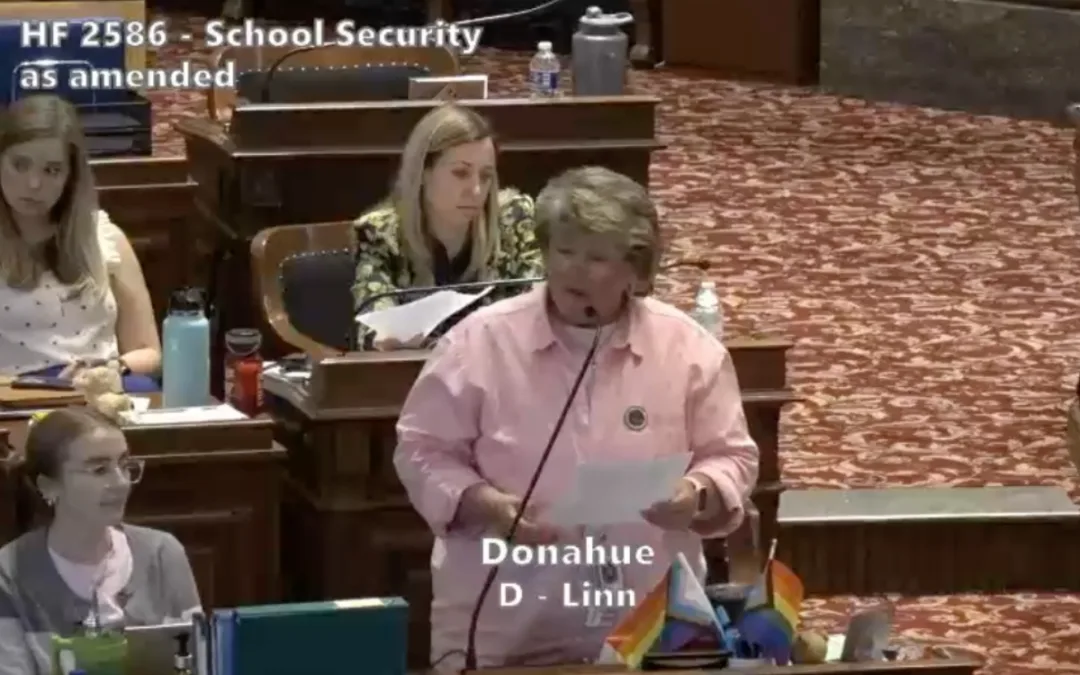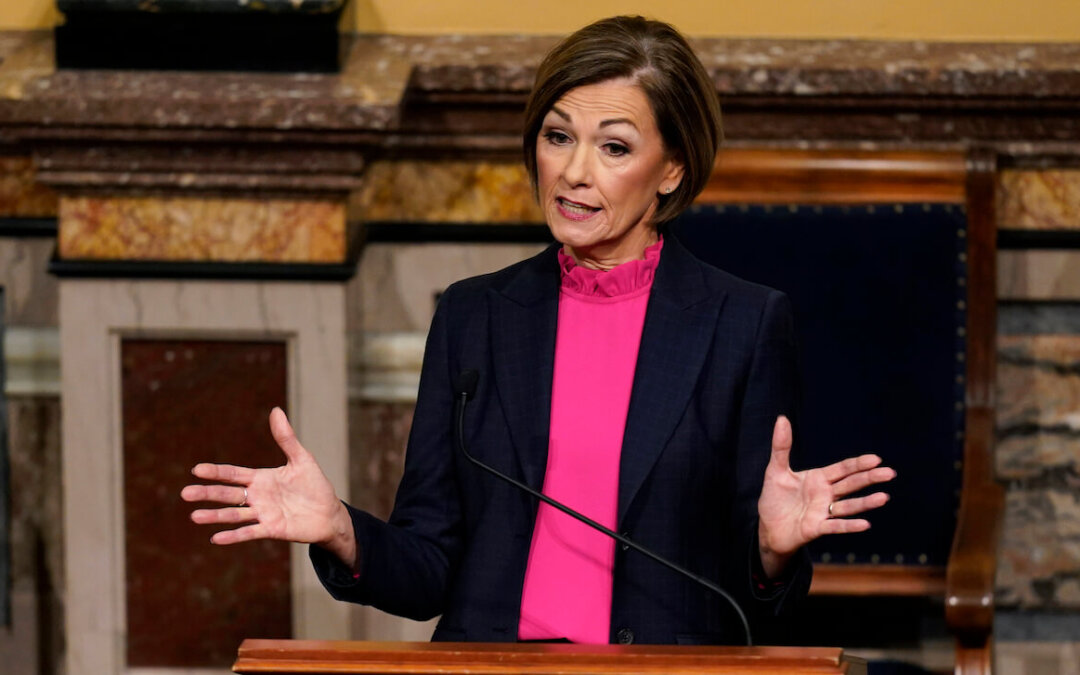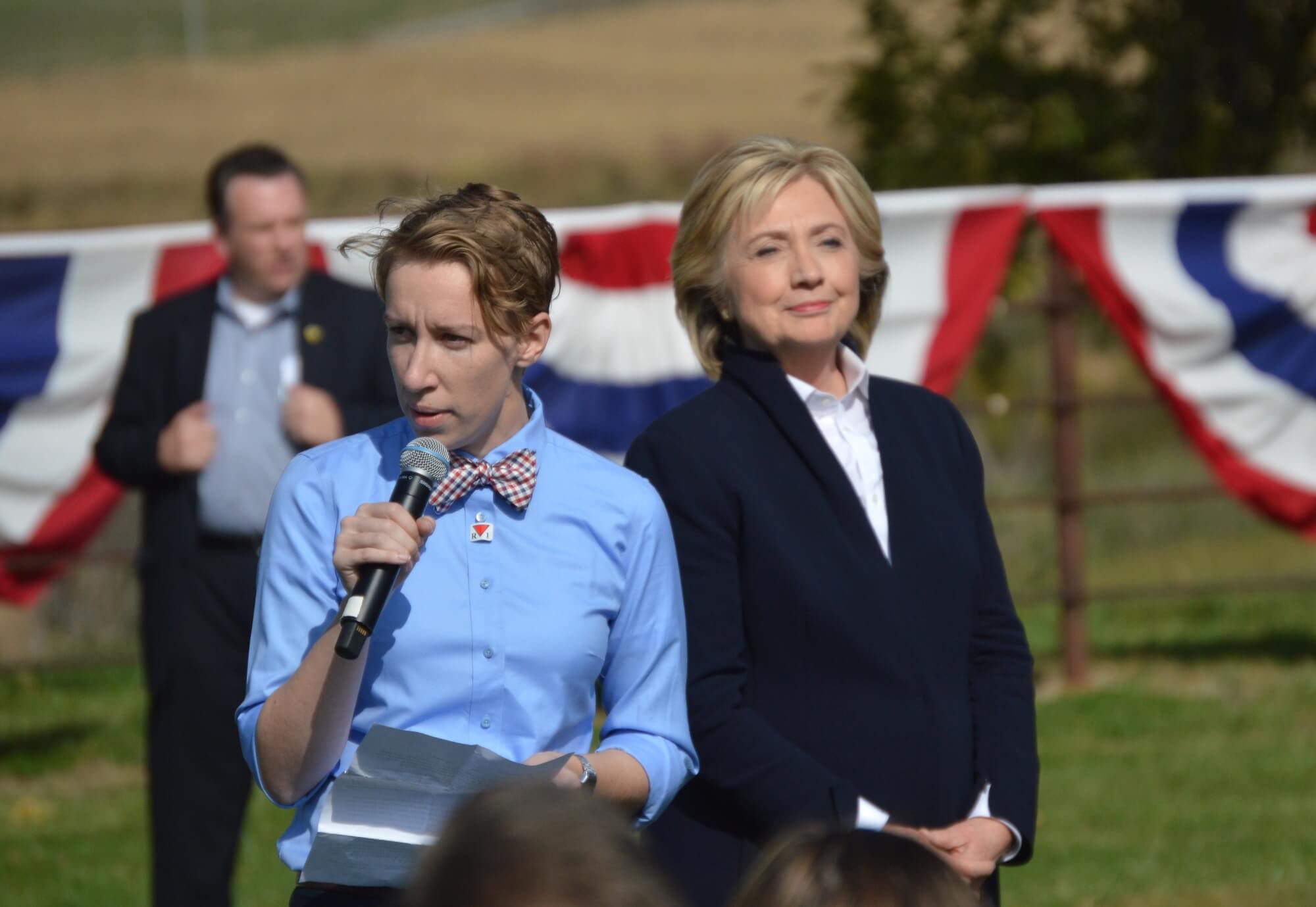
A little under eight years ago, a crew of Western Iowa Hillary Clinton staff and their best volunteers gathered after finishing their final task in Iowa, corralling Iowans into the Clinton corner at precincts across the county. Crowding around the TVs in a German beer hall where the campaign launched their caucus day efforts out of that morning, they nervously watched the returns.
Good news rolled in on the local front. Clinton supporters dominated precincts on the west end of Council Bluffs, scoring half the delegate count in several caucus sites (no easy task in a 6-person race). In the upper-middle class neighborhoods in the hills of the city, the Clinton team held their own, tying John Edwards and Barack Obama in the type of precincts that Obama won landslides in throughout the rest of the state. Harrison County to the north, one of the more populated neighboring rural counties, came in as a victory for Clinton. Page County to the south turned in an unexpectedly large margin for the campaign as well.
Excitement over the success, however, was heavily tempered.
The news on the TV was decidedly less positive. It was clear early on that Obama had won the state. Surprising to many was how large his lead grew. What originally felt like a potential nail-biter contest turned into a decisive victory for the Illinois Senator.
Headquarters staff in Des Moines called to anxiously inquire about the remaining outstanding precincts in Pottawattamie County. Edwards led Clinton statewide for second place by only a handful of delegates, and there was hope she could still close the gap. The precincts that hadn’t reported yet were Clinton strongholds, but simply not large enough to overcome the margin.
“At least we kept her from being embarrassed,” a Clinton staffer told one their best precinct captains in the hopes of cheering them up while Clinton herself appeared on the TV for her speech.
It was cold comfort, however, and not entirely accurate either. Clinton placed a disappointing third place behind Edwards, setting off a long, slow downward spiral for the campaign that led to her defeat by Barack Obama in the primary.
“What kind of people did you see out at your caucus site?” the visibly shaken Clinton caucus director asked organizers in exit interviews the next day. “Who were in Obama’s corner?”
There were no easy answers.
Back Again
The scene of that demoralizing night is where Hillary Clinton finds herself back again in 2015, committing to an all-in strategy for the first caucus state. It was the smart choice to make, though it was one the campaign didn’t have to.
But is she truly at risk of another early defeat? Joe Biden has now demurred on a run, though it was unlikely he would have built a caucus operation fast enough to compete. Martin O’Malley runs a serious campaign here, but has so far failed to catch fire, and it’s unclear how much he’ll factor in on caucus night at this point without a drastic change.
Bernie Sanders presents the real danger, perhaps surprisingly so from early expectations. The Vermont Independent-turned-Democrat draws large crowds and enthusiastic supporters, and has risen slowly but steadily in the polls. Two recent polls show him within striking distance of Clinton. He trails her 48-41 in the Des Moines Register’s Iowa Poll released yesterday, and 51-40 in today’s Quinnipiac Poll. That’s much closer than many thought he would ever get, and have people wondering whether Clinton could be upset in Iowa once again.
But some of that concern relies on a false memory of the 2008 campaign. The Clinton operation was no total disaster, as some would have you believe. They turned out the third-most supporters in caucus history, and fell to quite possibly the best campaign ever run, led by a once-in-a-lifetime, inspiring politician. Indeed, many people are surprised to learn just how fractured the county-by-county win map looked in Iowa. Obama ran up his margins by winning heavily Democratic counties in the east, while Edwards won many counties in the central part of the state. Clinton claimed victory in 25 counties, mostly in western and northern Iowa.
For Clinton’s caucus night on February 1st to turn out differently this time, Western Iowa will serve as an important building block to securing a statewide win. Racking up delegate margins in Council Bluffs, Sioux City, Carroll and everywhere in between will be necessary to offset any Sanders advantages in some of the more liberal communities in Eastern Iowa.
Is her 2016 Iowa Caucus campaign capable of holding off Sanders? What have they learned from 2008? How do activists and voters in Western Iowa see their presidential candidate choices?
Over the past three weeks, Starting Line made two trips through Western Iowa and spent many hours on the phone, interviewing over 30 activists, staffers, campaign volunteers and event attendees to see where the state of the race lies in this key region for Clinton (disclaimer: I think most of my readers know this, but I should note that I was a field organizer for Hillary Clinton’s campaign in Western Iowa in 2007/2008).
The Western Iowa of 2015
What’s different in Western Iowa eight years after the 2008 caucus? Spend even a little bit of time west of I-35 and you’ll find both a changed landscape and soul in Iowa’s oft-ignored region. Wind turbine fields now line both sides of the highways, transforming the scenery from endless corn fields to images of a new, technological future. You can hear Spanish spoken more frequently in Steve King’s district, as Iowa’s Hispanic population has found some of its fastest growth in small towns like Denison and Storm Lake.
The closing of the John Morrell plant in 2010 hastened the retreat of the middle class in Sioux City, which now turns to the flashing lights of a Hard Rock Cafe Casino to breathe new life into its downtown. Council Bluffs, meanwhile, barrels full speed into its new economic development, leaving the days it was derided as “Council-tucky” long in the past.
The fate of the many rural communities have been mixed. Some, like Palo Alto County, where the community college trains students to construct and maintain the many nearby wind turbine projects, boast a unique vibrancy as they pioneer their way into the new clean energy economy. Others, like in Cherokee County, where the locals worry that Governor Branstad may close their job-sustaining mental health care facility, feel increasingly left behind.
On the political front, this remains deeply red territory. Democrats used to hold a decent number of elected offices in some pockets of Western Iowa, but few now remain, wiped out in the landslide years of 2010 and 2014. Iowa Republican candidates rack up their winning margins out west, but local Democrats have still fought hard to hold their own in recent years. A reenergized Democratic organization in Woodbury County made it one of the few in the nation to flip from McCain in 2008 to Obama in 2012. The “SOLO Democrats” group in the four counties in Northwestern Iowa have given progressives a sense of belonging in the state’s most conservative corner. And efforts to politically organize the growing Hispanic are underway.
That’s the setting you’ll find as you travel around, and as you drive north into the town of Carroll you’ll be greeted by two looming wind turbines on either side of the road, standing like a gateway to welcome you into the new world of Western Iowa. Pass them and head into town, and you’ll also find a new, stronger, better-prepared and modernized Clinton caucus campaign.
Meeting The Voters Where They’re At
“We’re working to earn every single vote,” says Kate Magill, the Hillary Clinton field organizer for Carroll and Sac Counties.
Magill sits in the local campaign office situated on the town’s main street, a surprisingly active place for four months before caucus night, filled with numerous staff, campaign fellows/interns and volunteers. She moved to Carroll back in April, the small regional population hub halfway between Des Moines and Sioux City, part of the first wave of staffers to hit the ground the very day Clinton announced. She worked out of her car and coffee shops for a few months, first organizing 13 rural counties from Sac to Ringgold.
Her mission for the last seven months has been to build a volunteer operation to turn out Clinton supporters on caucus night. She started reaching out to past Clinton precinct captains, but also the volunteer leaders from the Obama and Edwards campaigns. While some were hesitant at first, many have since been recruited to help Clinton.
The other big focus for Magill has been to find supporters in every single precinct. To do that, she’s gone to them.
“It’s saying let’s hold coffees at Cliff’s Place in Manning, let’s go to the golf course in Breda,” she says of the campaign’s rural organizing strategy. “I met a group of 15 people at the Legion hall over in Arcadia to talk about Hillary Clinton – the population is 400, there’s 180-something registered Democrats, and I was talking to 15 of them. You have the ability to do that, when you have these communities they do get together. But if you don’t come to them, it is very difficult.”
That’s precisely the type of grassroots outreach necessary to succeed in the caucus. And when run by competent organizers, it’s a difficult advantage for any other campaign to overcome.
An Experienced, Motivated Team
Perhaps the first most notable difference from the 2008 campaign is the amount of experience each Clinton field staffer brings to their job. Unlike last time, when Obama and Edwards split the talent pool of campaigners from around the country, Clinton’s early dominance of the potential 2016 field provided her a unique advantage in the staffing department. The campaign assembled an elite early team to deploy to Iowa, nearly all of whom took positions they were exceedingly over-qualified for.
The Western Iowa team is no different in this regard. Magill was a field organizer for Obama in 2012, worked for Terry McAuliffe in 2013 and served as a regional field director for Allison Lundgren Grimes in Kentucky in 2014.
In Sioux City, this Iowa Caucus campaign is the sixth for local organizer Scott Kosanovich. Starting as a campus organizer for Obama’s general election in 2008 at the University of South Florida, Kosanovich has worked a multitude of presidential and state legislative races, and was a regional field director for Charlie Crist in the Tampa Bay area in 2014. When a former boss told him of a potential gig on a presidential campaign in Iowa for 2015, he jumped at the chance.
“I packed up, decided this was a once-in-a-lifetime experience,” Kosanovich recalls. “People can go their whole lives without working in an Iowa Caucus, and I was not going to pass that up.”
The same is true for Jenny Glass, who works in Council Bluffs, counting multiple cycles as an organizer in her resume. This time she’s taking a step back from a management role to one more focused on managing volunteers, something her years of experience have given her a new perspective on for this campaign.
“I’m doing things this time that probably a first-time organizer wouldn’t have done,” Glass says. “The familial bond with the volunteers is something I think as a first-time organizer would have been difficult to create. It feels different to me than any other campaign I’ve ever worked on. I’m happier on this campaign than any other campaign I’ve worked on … it feels like anything’s possible. The amount of management that the volunteers are taking on are just something I’ve never experienced before.”
Their professionalism and work ethic has not gone unnoticed by local activists. Indeed, every single person Starting Line spoke to, Clinton supporter or not, praised the campaign staffers they have gotten to know so well.
“They have the most experienced staff by far,” says Penny Rosfjord, the Woodbury County Democrats chair who recently endorsed Clinton. “I think they’ve matched the staff very well to their location. They have come in with the right tone in Western Iowa. They came in very quietly and they systematically picked off people and gotten people committed to caucus.”
“She really has a greater presence here than she did in 2008,” observes Linda Nelson, the Democratic county chair for Pottawattamie County. “Even though we’ve only seen her publicly in a large group once, she’s got quite a ground game with some top-notch staff.”
“In 2007 the Obama campaign by this point had two offices open, and by the caucuses they had three in Sioux City, which was insane,” says Rick Mullin, a former Woodbury County chair who has endorsed Martin O’Malley. “They did a great job of recruiting volunteers, bringing in new people that hadn’t been involved before, and finding ways of involving and empowering them to participate in the campaign … The difference this time is Clinton is not taking Iowa for granted. Their campaign is focusing a tremendous amount of resources, burning through a lot of money on a daily basis.”
“It seems to me like there’s a lot more staff on the ground, a lot earlier,” notes Jennifer Herrington, a major Democratic activist in Page County. “Everyone I’ve met I’ve been super-impressed with. I felt like the Hillary staffers were very Obama staffer-like. They’re fun, and brilliant and passionate. It seems like she took a page out of the Obama playbook.”
“Their interns, everybody, I’ve been impressed with the quality of their staff, and I’m not taking away from the other staffs,” notes Tim Bottaro of Sioux City. “That shows me too that they’ve gotten smarter. They’re not taking it for granted. With the numbers she posted, she could take it for granted.”
Aside from the experience of the first wave of organizers, the sheer number of staffers is something to behold. Each Western Iowa office visited had at least a team of five organizers and fellows, a far cry from 2008 when it wasn’t until November that several of the rural offices hosted more than one person. That number of bodies is crucial for areas like Western Iowa. A staffer responsible for any more than three or four spread-out rural counties simply won’t be effective, considering the amount of drive time they need to hold important in-person meetings with activists.
Reactivating The Old Network And Building A New One
Another key advantage the Clinton campaign came into Iowa with this time was access to the old list of county coordinators, precinct captains and volunteers from 2008.
“The first calls I made were 2008 precinct captains,” says Kosanovich. “I spent hours upon hours on the phone setting up one-on-ones. From my experience across the board they were really ready to go, and they’re all still actively volunteering so far. Obviously, some of them are a little older than they were eight years ago. But they’re still putting in the time and effort. A lot of them got involved in 2008 because they wanted to see a first woman president, and they still do.”
In Carroll many of the former volunteers were eager to jump back on board, helping the local staff network out into the community.
“I was a Hillary precinct captain in 2008, we came up just a little bit short against the Obama machine,” says Jean Guy (Obama carried Carroll County). “I received a call from Kate this spring, and met with her at McDonald’s and she asked if I would help again. I’ve started introducing her to people. We connected her with people in Carroll who would get the ball rolling.”
For Glass the old Council Bluffs team served as a good place to start, but she also found some of her best volunteers early on from other sources.
“I think there’s a normal amount of fatigue,” she says of reactivating the 2008 Clinton group. “There’s a good chunk of the precinct captains here now who were precinct captains in 2008. There’s a lot of new people. Mostly it’s people who have never volunteered before rather than people who had a small role in 2008.”
One of her best, most active volunteers she got from a lead from the local Democratic Party staffer in 2014, Lillie Caitlin, who now works for the Clinton campaign in Iowa City.
“He was one of my first calls, one of my first meetings here,” Glass says of Doug Irwin, who recently retired and only first volunteered for campaigns in 2014. “He’s already talked with every supporter on the phones and on the doors [in his precinct].”
Importantly, many of these new contacts aren’t coming through the traditional volunteer prospect lists. As we wrote about before, the Clinton campaign has put a heavy emphasis on online organizing and communication, and it’s putting them in touch with people they might not otherwise find.
“There’s some new faces, and some younger people that we didn’t see the last time,” notes Judy Wickencamp, a 2008 Clinton precinct captain in Pottawattamie County. “Hillary’s reaching out more through the different forms of communication that she didn’t the last time. I think she’s making better use of the internet and Facebook. I think that’s helped her tremendously.”
“A lot of them came from online – they signed up online through clicking on a link or visiting ‘Hillary for Iowa,’ visiting HillaryClinton.com, and that filtered down to me to give them a call,” Glass notes. “And our follow-up is 24 hours.”
Glass has found many of her best volunteers online. One woman attended a pizza party she’d seen on Facebook – the event was largely for high school kids, but she came anyway and Glass kept in touch with her through Facebook messaging. The woman had never volunteered before – and didn’t like to answer her phone – but Glass, through many messages online, has now recruited her as a precinct captain.
As is also often the case in Western Iowa, it helps to have a scrappy mentality. Glass couldn’t find one potential volunteer’s phone number despite repeated searches, so she just started calling up people nearby her to track her down.
“I looked up a list of people who lived around her, which I call ‘phone neighbor,'” Glass explains. “I called this lady named Arlene who lived close by. And Arlene had her phone number, and gave it to me. And I called her and now she’s an engagement director and precinct captain. She’s great, she’s done supporter housing for us … they’re two of our biggest volunteers early on.”
Aside from the completely new volunteers, there also appears to exist an important realization in some of the 2008 Clinton supporters that they can’t allow a repeat of her last defeat. At times bringing in volunteers in 2008 proved exceptionally difficult, even in Western Iowa areas where she enjoyed majority support. Her lead in the polls in the summer and early autumn made many question how much help she needed. Obama’s supporters, on the other hand, knew they needed to work hard on their underdog campaign. Even though Clinton’s lead is even more dominant this time, a new mindset seems to have taken hold.
“A lot of the Hillary supporters in 2008 are Hillary supporters now,” explains Herrington of what she sees in Page County. “A lot of them are working harder, are more involved. I can think of a number of women my age and my mother’s age who are phone banking every night who have never come to a central committee meeting.”
Picking Up Key Activists
While Clinton was seen as the “establishment” candidate in 2008, that didn’t always translate to support from the longtime local party activists. Obama, Edwards and even Joe Biden and Bill Richardson took a considerable share of every county party central committee. Indeed, in Council Bluffs the Clinton campaign found little support among the local party’s committee members, and simply had to organize around them.
Bringing on board the types of activists who have organized their local caucus for decades or know every volunteer in town is essential to a win for any candidate. In Western Iowa there’s clear signs that the campaign has scored major victories on this front. A number of well-known Western Iowa names, including Penny Rosfjord and Tim Bottaro of Sioux City, Jennifer Herrington of Page County and Deandra Smith of Harrison County are all on board, all of which were with different candidates in 2008.
“When you get out to Western Iowa into the rural, it’s really important you have enough boots on the ground to be everywhere,” Rosfjord says of what she thinks has made Clinton’s team so successful in winning over key activists. “They have stopped, looked and listen. They know their people. In the places where they needed to soft-sell, they’ve done that. Slowly but surely, those people are turning.”
For Herrington, one of Southwest Iowa’s most active and well-known Democrats and an important Obama backer in 2008, an early personal meeting with Clinton helped sway her. On Clinton’s first visit to the state, she sat down with a small group of important Western Iowa activists in a Council Bluffs coffee shop.
“I was really kind of nervous about it, but
within moments I was completely at ease,” Herrington says of meeting Clinton. “It truly wasn’t about her stumping, she was genuinely there to hear us and listen to our concerns. And she’s taken that information and created policy statements. … I continue to be convinced that she can get the most done.”
For others, the new election cycle brings new challenges and opportunities for the next President, and former Obama supporters see Clinton as the right person this time around.
“In 2008 Obama had the right message,” says Bottaro, who publicly backed Clinton last week. “The system as we knew it wasn’t working. That message resonated. And he had a certain charisma that resonated as well. After eight years of Obama, I don’t feel there’s so much of a change aspect needed, as we need someone who’s experienced and steady and has the background and skills necessary to get something done.”
“I waited until the first debate to make my decision,” says Smith of Harrison County on her endorsement, noting she appreciated Clinton’s lack of mud-slinging and focus on policy issues.
Many have noticed the organizational advantage they’ve built by winning over more of the activist base.
“I think Hillary has a much stronger organization than any other candidate as far as grassroots,” noted former Democratic Senate President Jack Kibbie of Emmetsburg. “There’s more local activists organized for Hillary than the other candidates.”
Building a Volunteer Community
As an old campaign axiom goes, the candidate brings in the volunteer, but the local campaign staffer keeps them coming back. You can get all of these important activists and brand new volunteers, but they’ll only be effective if the staff make them feel welcome. This time around, the Clinton campaign has made considerable strides in embracing an Obama-like model of engaging and empowering their volunteers.
“It’s just a situation like you’re asking a friend,” Glass says of the relationships she’s built with her volunteers. “I have a great time in this office. I’ve worked on a lot of campaigns – the culture of a campaign is so important, the positive culture. Coming to the office every day and enjoying it. That’s a candidate-down thing. That’s what happens here, and that’s why it’s so fun to be here.”
“I think the knitting together of people that Jenny has started doing is a very good idea,” Lauren Bliss, one of the Council Bluffs’ office best volunteers, and an Obama 2008 activist, noted at Hillary Clinton’s visit two weeks ago. “I’ve gotten maybe eight hugs already today here from people I see repeatedly [at the office] who are now my friends. Not only are we working together, but we’re friends.”
“Being from the corporate world, if your manager can grow other people, that manager is worth a ton,” says Doug Irwin, who volunteers often in Council Bluffs. “That’s what I was seeing happening out there. The team is really, really good. I’ve gotten to know the volunteers, and that’s part of the fun too, getting to know people in town who I would never have met in my work career or anything else.”
That’s especially helpful in Western Iowa, where Democrats can feel particularly shy living in such a conservative area.
“If you’re in the minority, that feeling is always heightened,” Magill says of Democrats in her heavily Republican counties. “You tend to stay silent. We want people to know you’re not the only ones. Maybe you’re in Ringgold or Sac County, and yes, there’s only 30% Democrats, but people see themselves as 2%. We want them to know the names of other Democrats. We want them to feel like they can say something.”
Kathy Winter, the Democrats’ county chair for Osceola County, points out how decisive that sense of community could be for Clinton this time in Western Iowa’s rural counties.
“They understand better that caucusing is not easy,” Winter says of the Clinton campaign. “Support does not mean someone going to the caucus and casting their vote. They experienced that once, and they get that now. A primary is easy. A primary is open from 9am to 9pm … [Democrats ask] who else is going to be there? Is there going to be anyone else down there for my candidate? Would I have to say something in front of the entire group? … I have to declare who I’m for in front of all these people – it’s not easy.”
There’s also an understanding in the campaign that this area needs a different approach. Organizers note they’ve been given some leeway to try out different tactics in Western Iowa (something a few 2008 Clinton staffers did as well, just without permission from headquarters).
“It’s a lot more spread out, and people aren’t as willing to [sign caucus commitment cards] it in the open,” Kosanovich says. “So we’ve started writing letters to supporters and people within their communities.”
What Of Hillary’s Competition?
The Clinton campaign has clearly built a caucus operation far superior to their 2008 endeavor. But will it be enough?
The view of Sanders’ strength in Western Iowa appears to be mixed. He often attracts extremely enthusiastic supporters, eager to volunteer, but the depth of his backing appeared suspect. Outside of strong volunteer networks in the major cities and larger towns, Starting Line didn’t hear as much as we spoke with activists in more rural areas.
“It’s kind of a cross-section of folks who are supporting Sanders,” Nelson, the Pottawattmie County Dems chair, notes of Sanders’ local support. “We’ve got some community college folks, but also some retired people who are thrilled and promoting his candidacy.”
“Bernie Sanders has some folks from here signed on who were absolutely my best workers last time around, so I think it’s going to be a ground game,” says Marcia Fulton, a co-chair of the Union County Democrats.
“The first Sanders rally they had, there were 300-400 people,” says Bottaro, who doubts Sioux City activists will be too weary of Sanders. “For a while I wondered, was this a white Barack Obama?
“Clinton is getting a tremendous amount of volunteer support,” Mullin, whose son volunteers for Sanders, observes of the local Sanders and Clinton campaigns. “A lot of support, period. A lot of excitement. The Sanders campaign is more of an insurgent campaign. It reminds me a lot of the Howard Dean campaign. People who are really, deeply invested in the campaign. True believers. They’ve got the passion.”
What of his self-described “socialist” label? Democrats in Western Iowa can sometimes be a more pragmatic bunch, having seen their local candidates fall to Republicans time and time again. To get elected in this part of the state, you have to appeal to the other side and avoid being labeled as too liberal.
“A couple of [friends] are interested in Bernie Sanders,” Guy says in Carroll. “And I can understand that, because most Democrats agree with everything he says, but I think Hillary is the person who can get elected and complete that agenda. I think the aspect of his being a socialist and saying he was will just kill him in the general.”
“That’s the biggest thing I hear with Sanders, is the ‘socialist’ aspect,” agrees Marcia Kollasch, Guy’s friend who was with Obama in 2008, but volunteers for Clinton in Carroll this time.
“I haven’t heard many of my friends talking about Bernie Sanders,” noted Sue Griswald, who attended the Clinton visit in Council Bluffs.
“People aren’t decided at this time,” suggests Steve Hultman, a Democratic activist in Pottawattamie County. “They’re willing to listen to Bernie, but Bernie says the part about being a socialist, so that’s kind of a key word around here … The one thing I’m reminded of is there were a lot of people some time ago who got real excited about George McGovern, and he was strong through the primary and lost big. Is that Bernie, or are things so different today?”
“I really have not seen that at all, and I’m a little surprised,” counters Fulton, noting Union County Democrats haven’t cared about the socialist label.
“The Democrats out here that are really active are the more liberal Democrats,” Bottaro believes. “I don’t think Bernie’s hurt by that, I don’t think anybody is.”
One major similarity Sanders enjoys with Obama’s 2008 run is the excitement he’s generating among young people. That’s great for volunteers, however, the full effect of their support on caucus night may not match Obama’s. Many Iowa Democrats were happy to see the caucus date stick to February 1st, when college classes are in session, so students can more easily attend their precincts on campus. Paradoxically, however, this may damper their influence. Rather than be spread out across the state while home on break, students will now file into a much smaller number of precincts, where the number of delegates you can win is a set amount. You could turn out 100 or 1,000 supporters to a caucus precinct, but you’re only going to get so many delegates.
Winter of Osceola County remembers how many young people showed up for the first time in 2008 in her county.
“He is appealing to a lot of young people, and we don’t have those,” Winter observes. “In 2008, because of when the caucus was, college kids caucused at home … would our caucus have turned out the same eight years ago if it had been on February 1st? Probably not … I can remember lots of my son’s friends being there that night. I can name seven or eight of the group he ran around with … There were people at the caucus that I have never seen at an event since then – they live here, but they were there with their kid.”
An Overwhelming Organizational Lead
Even if Sanders continues to rise in the polls and motivate progressives to volunteer on his campaign, it seems highly unlikely that they will be able to overcome the organizing head start the Clinton campaign built, at least not in Western Iowa. The experienced, well-trained staff her campaign has deployed has developed intricate, community-based volunteer networks and won over many of the influential activists who were not with Clinton last time. To defeat that takes an exceptional amount of man hours and a base of likely support to pull from and turn out, something which doesn’t appear large enough in several of these rural, conservative counties.
The final result of the 2016 Iowa Caucus will yet be determined on a cold February evening, as the Democrats’ campaigns do their best to fill precincts with excited supporters. Whatever the returns show that night, one thing seems certain: Western Iowa remains Clinton Country.
by Pat Rynard
Posted 10/23/15
Politics
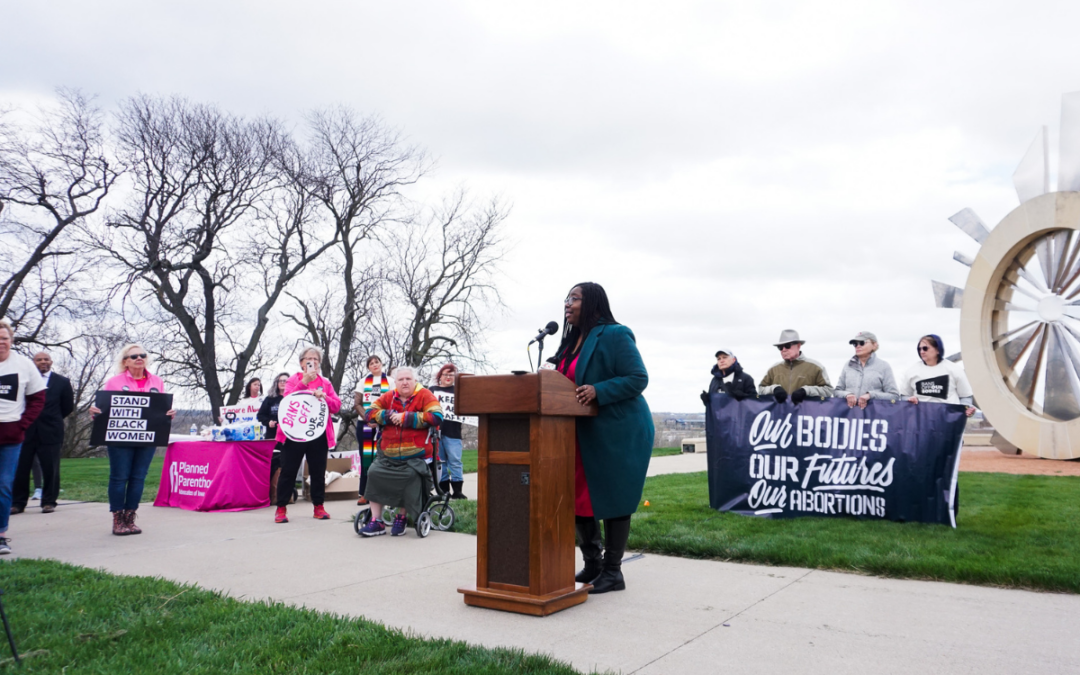
Abortion supporters rally before Iowa Supreme Court arguments
Abortion saved her life seven years ago and Leah Vanden Bosch is more grateful for it now than ever. Vanden Bosch, who serves as the development and...
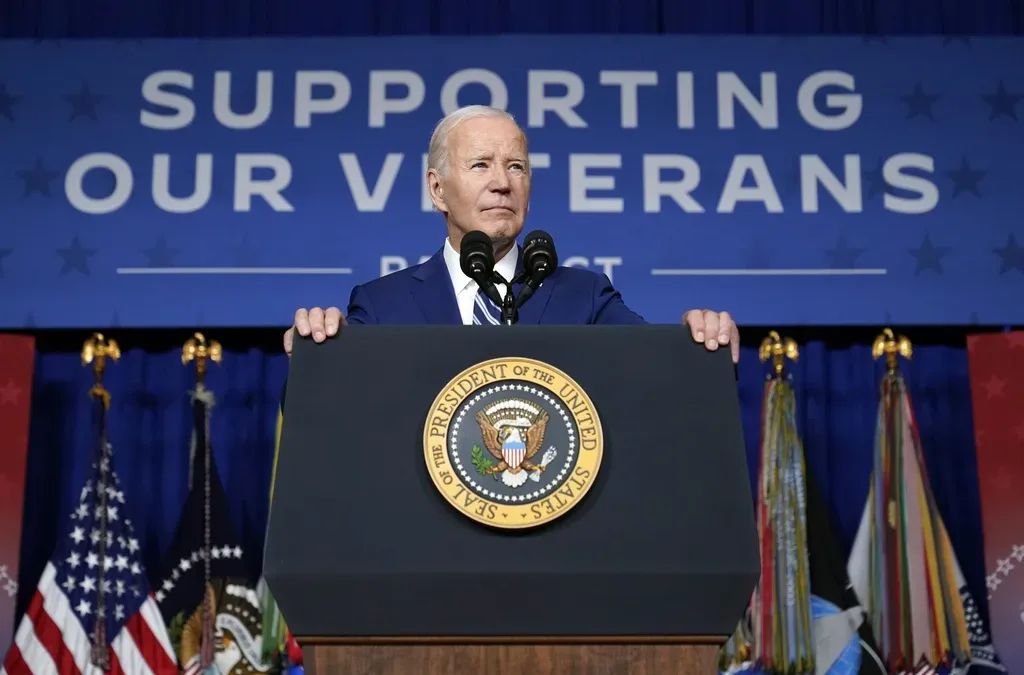
New VA program to help more than 40,000 veterans stay in their homes
The Department of Veterans Affairs (VA) will launch a “last resort” program for tens of thousands of American veterans who are in danger of losing...
Local News

No more Kum & Go? New owner Maverik of Utah retiring famous brand
Will Kum & Go have come and gone by next year? One new report claims that's the plan by the store's new owners. The Iowa-based convenience store...

Here’s a recap of the biggest headlines Iowa celebs made In 2023
For these famous Iowans, 2023 was a year of controversy, career highlights, and full-circle moments. Here’s how 2023 went for the following Iowans:...












